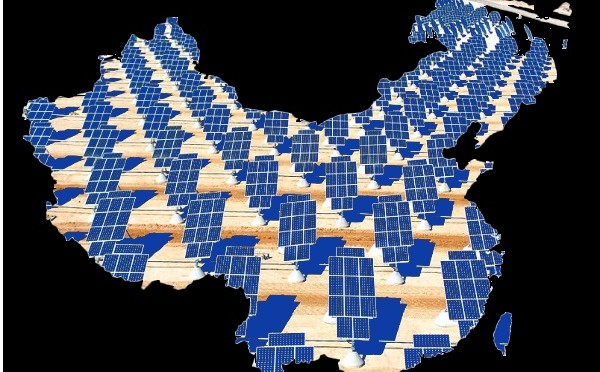China’s photovoltaic industry has made a great contribution to the world’s low-carbon development, and protectionism will only burden the costs of the green transition, Chinese photovoltaic companies said on Wednesday on the sidelines of the 15th Annual Meeting of the New Champions, also known as the Summer Davos.
Tariffs and other trade barriers will not affect China’s green development, and Chinese companies’ determination to further strengthen international cooperation will not change, business leaders noted, calling for more dialogue and communication amid a turbulent external environment.
“China’s contribution to the world’s green energy transition is enormous. Taking JinkoSolar as an example, by the end of the second quarter of this year, the total shipment volume is expected to reach about 270 gigawatts, which is one in eight “The modules installed in the world are manufactured by JinkoSolar, and one in every eight kilograms of carbon dioxide emissions reduction is contributed by JinkoSolar, a single Chinese solar photovoltaic company,” Qian Dany, global vice president, said on Wednesday. from JinkoSolar, to the Global Times.
LONGi Green Energy Technology Co is another leader among Chinese PV companies driving low-carbon technology innovation.
Xie Tian, ??general director of LONGi Strategic Management Center, told the Global Times on Wednesday that the direct power consumption from silicon material to photovoltaic modules has been estimated to be only about 0.4 kilowatt-hours ( kWh) per watt, while each watt of photovoltaic modules generates around 45 kWh of electricity over their full 30-year life cycle.
“From 0.4 to 45 kWh, PV ultimately produces 100 times more energy efficiency than its production cost. It is a true ‘amplifier’ of green energy,” Xie said.
On June 14, LONGi Green Energy Technology Co announced a major breakthrough in the development of its silicon perovskite tandem solar cells, with photovoltaic conversion efficiency reaching 34.6 percent.
In November 2023, LONGi’s tandem solar cell equipment achieved an efficiency of 33.9 percent for tandem cells. Less than a year later, they have broken the record again, demonstrating the strong R&D capacity of Chinese companies and their relentless pursuit of exploration.
China’s photovoltaic companies have continued to reduce costs through technological innovation, making photovoltaics a truly fair, equitable and monopoly-breaking energy source. In the past, only rich countries could afford to use it and had to rely on subsidies from national governments, but now photovoltaic power generation can be used wherever there is sunlight, Qian said.
According to the International Energy Agency, China’s provision of relevant services and support to other countries has significantly increased the accessibility of clean energy technologies and reduced the cost of using green technologies globally.
China’s PV companies have continued to expand their overseas presence by building factories, creating jobs for local people and generating tax revenue, and helping to establish a complete supply chain as well as applications from the beginning. until the end, Qian further noted.
In terms of the so-called overcapacity that some Western politicians and media have promoted, he said that there is no innovation or technological advancement without competition, and if the production of a product is exactly equal to its sales volume, then there will be no progress.
Xie said mutual trust, as well as dialogue and communication, have become increasingly important to address differences and enhance international cooperation to address climate changes.
“The relevant protectionist measures taken by Europe and the United States against China’s green industry will only increase its green transition costs, but will not affect our determination to enhance international cooperation and promote global low-carbon development,” Qian said.
Despite global uncertainties, China remains committed to green development.
By Liu Yang in Dalian


